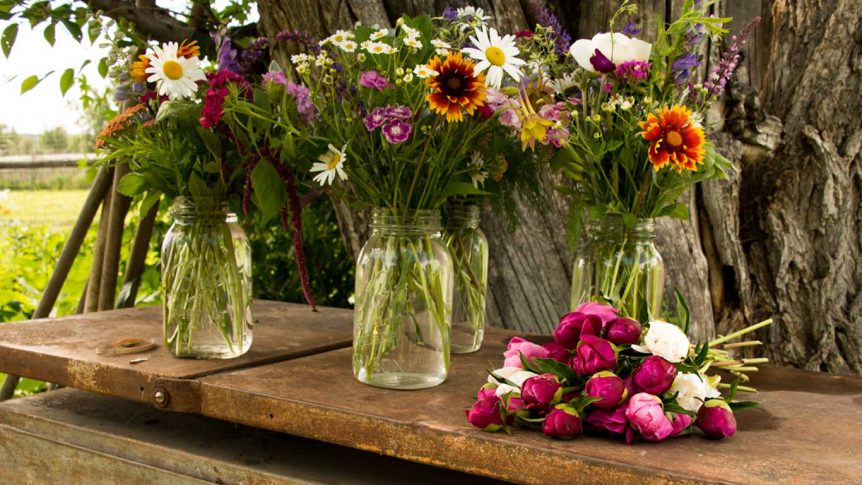9 pro tips for creating and maintaining a beautiful cut flower bouquet
A bounty of blooms shouldn’t be restricted to cheering only outdoor spaces. Flowerbeds bursting with blossoms can spare a few buds to brighten homes, offices, or the day of a friend.
Debbie Smith, an avid lifelong gardener, spent 13 years plucking flowers from the overflowing beds of her rural Montana yard to share with customers. She would create robust cut flower bouquets, awash with color and scent, and deliver them to a list of around 40 weekly flower bouquet delivery subscribers for as long as her gardens allowed. Along the way, she learned some tricks for making beautiful, lasting bouquets.
- Pick flowers in the cool of the morning. Stems will be rigid unlike later in the day when plants are stressed by heat, or recovering from the heat of the day as they would be in evening.
- For a medium bouquet, one that would fit nicely in a 1-quart mason jar, pick about 20 stems including a variety of size, color, and texture, including several stems of greenery.
- Don’t only pick flowers that are in complete bloom. Selecting stems with multiple flowers in various stages of development will provide a longer lasting, and continually changing bouquet.
- Strip any leaves that would be below water level in the vase or jar.
- Put cut flowers into water immediately and keep them in a cool place. Smith arranges her bouquets in the shade of a tree to minimize stress on the freshly cut flowers.
- For longer-lasting fresh cut bouquets put cut flowers in water as soon as possible and add ¼ teaspoon bleach and 1 tablespoon of sugar per quart of water. As the bouquet is enjoyed, water should be kept full and changed (complete with bleach and sugar addition) anytime it starts to get cloudy. With fresh water, cut flower bouquets should easily last a week.
- Peonies can be a beautiful centerpiece for a bouquet, but the plants only bloom for a short period of time. To extend their season, Smith recommends cutting some peony stems when they’re in the bud stage. Cover the tops with a plastic bag, put the stems in a container with a couple inches of water, and store them in a fridge. “They can be saved for weeks that way and will open once you take them out and put them in your vase,” Smith says.
- For a unique, whimsical look, Smith likes to use the coiled tops of garlic plants—known as scapes—in her greenery. “Scapes should be cut anyway to encourage larger garlic bulbs,” she says. “They make interesting additions to bouquets and are also delicious when sautéed!”
- Scent is another critical component Smith considers when composing a bouquet. It’s not the blooms, though, it’s the greenery. “Herbs such as dill, mint, and basil make for interesting, beautiful, and aromatic greenery in fresh cut flower bouquets,” she says. She plants a wide variety of herbs featuring unique scents for this purpose, including cinnamon and licorice basil, lemon monarda (beebalm), wild marjoram and tarragon. “I think scent is very important, hence the herbs,” she says. “A bouquet should provide more than just a visual experience.”
Helpful links:

